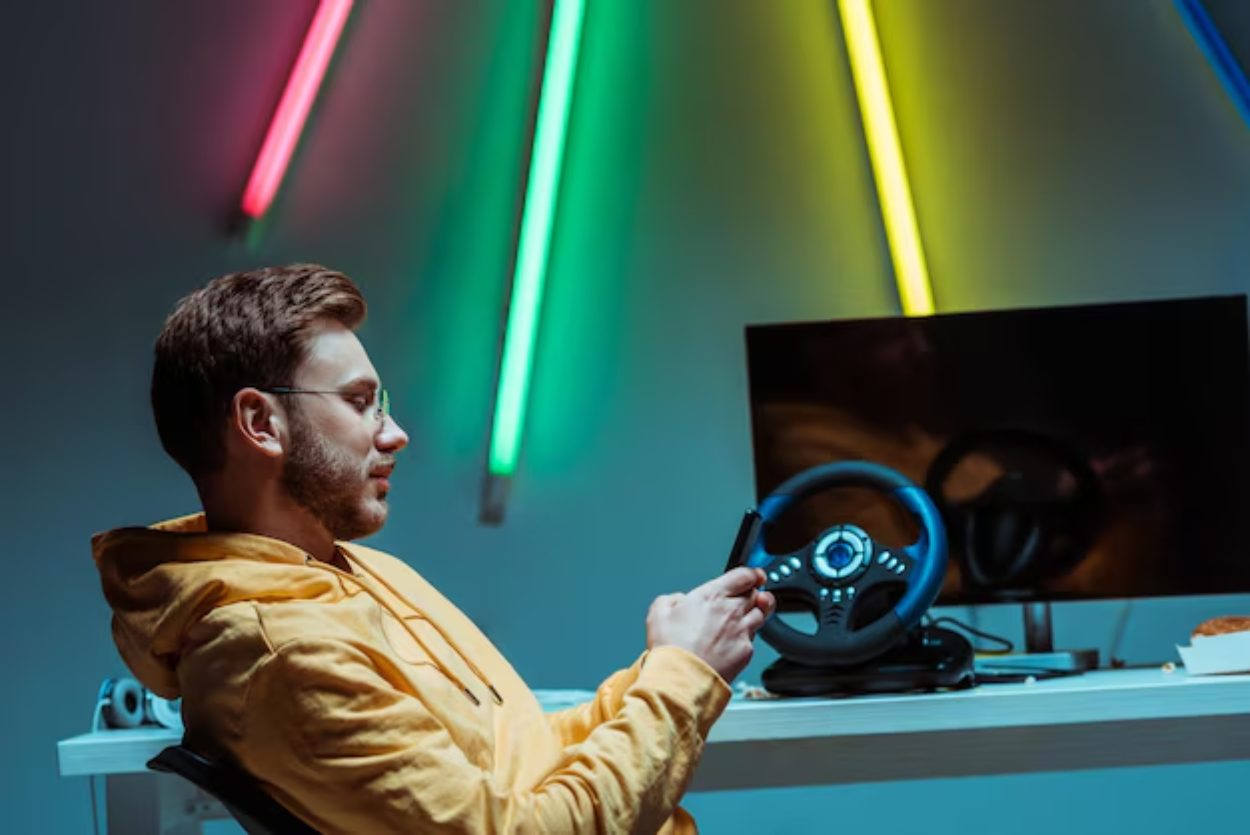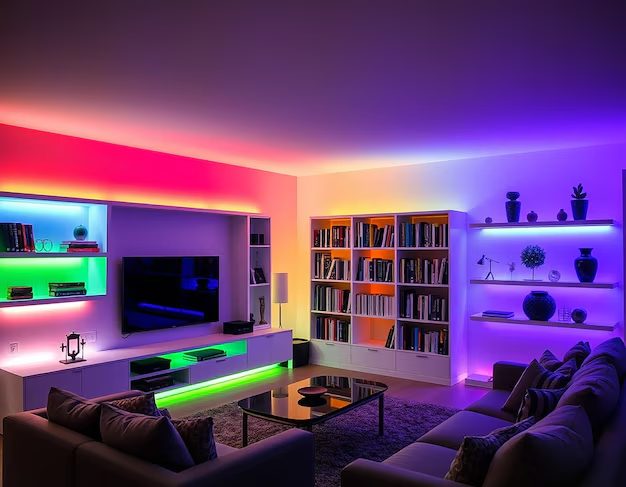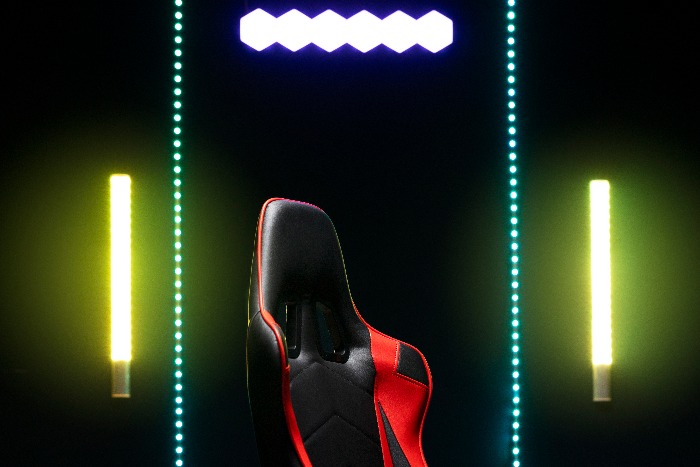Placement Guide: Where to Put LED Lights for the Best Gaming Setup

Lighting has become a big part of modern gaming setups. It does more than make your room look good—it improves mood, reduces eye strain, and creates a more immersive experience. LED lights are affordable, flexible, and available in a wide range of colours and designs, making them the top choice for gamers seeking a stylish and comfortable space.
Why LED Lights Matter in Gaming
Before we examine placement, it’s essential to understand why LED lights are so popular among gamers.
Benefits of LED Lighting for Gaming
- Improved immersion – Colours and effects match the mood of your game.
- Reduced eye strain – Soft lighting helps balance the contrast between the screen and the room.
- Mood setting – Different colours can affect how you feel while gaming.
- Energy efficiency – LEDs consume less power compared to old-style bulbs.
- Customisation – Remote controls, apps, or smart systems allow you to adjust brightness and colour settings easily.
Why Use LED Lights in Gaming Rooms?
| Benefit | Example in Gaming Setup |
|---|---|
| Immersion | Red or blue glow during a racing game |
| Reduced Eye Strain | Backlighting behind monitor balances brightness |
| Mood Setting | Purple lights for relaxed late-night sessions |
| Energy Saving | LEDs use less energy than traditional lighting |
| Customization | Smart LEDs controlled with phone or voice |
Reference: Harvard Health – Blue light and eye strain
Best Places to Put LED Lights in a Gaming Setup

Now let’s look at practical LED light placement ideas. Placement is everything—wrong positioning can cause glare or distraction, while smart placement makes the setup professional and comfortable.
1. Behind the Monitor or TV
This is one of the most common and effective placements. LED backlighting behind your screen reduces the brightness difference between your monitor and the wall, lowering eye strain.
Tips:
- Use LED strips with adhesive backing for easy installation.
- Choose a soft white or cool blue for long gaming sessions.
- Avoid overly bright LEDs that reflect off your screen.
Example: Many gamers use bias lighting behind monitors. It not only looks cool but also improves viewing comfort.
| Pros | Cons |
|---|---|
| Reduces eye strain | If too bright, can cause glare |
| Looks clean and modern | Needs proper placement |
| Easy to install | Some cheap strips lose stickiness |
2. Under the Desk
LED strips under your desk create a glowing floor effect that looks futuristic. It also helps if you play at night because it lights up the floor without needing overhead lights. Some gamers even mix clearance lights with RGB strips for extra visibility under the desk, especially when cables or foot pedals are involved.
Tips:
- Use RGB strips to change colours with your mood.
- Place them near the back of the desk’s bottom panel to hide the strip itself.
- Avoid placing strips directly where your legs move.
Example: Many streamers place under-desk lights synced with their PC to give a “floating desk” effect.
3. Around the Desk Edges
Wrapping LED strips around the edges of your desk gives a neat outline effect. It makes the desk stand out and highlights your setup without being too intense.
Extra Tip: Always measure your desk first to pick the right size of LED strip. This avoids uneven placement and ensures the glow covers the entire desk edge evenly.
| Placement Style | Best For | Look Achieved |
|---|---|---|
| Bottom edge | Small desks | Floating effect |
| Top edge | Large gaming desks | Clean glowing border |
| All-around edges | Corner or L-shaped desks | Full futuristic outline |
4. Behind the PC Tower (Case Lighting)
Modern gaming PCs often come with glass side panels. Placing LED strips inside or behind the PC case highlights your hardware.
Tips:
- Sync your LED lights with your fans for a clean, cohesive theme.
- Match case lighting with desk lighting for consistency.
- Use software like Razer Chroma, ASUS Aura, or Corsair iCUE for synchronisation.
5. Ceiling and Wall Corners
Adding LED strips along the ceiling edges or wall corners creates a uniform ambient glow throughout the room. It makes the room look bigger and more cinematic.
Tips:
- Warm white is ideal for creating cosy vibes, while RGB is suitable for gaming themes.
- Use diffusers for a smooth, even glow.
- Avoid shining directly at your screen.
6. Behind or Around Shelves
If you have shelves for figures, collectables, or controllers, LED lights can make them stand out. This is common in gaming rooms and streaming setups.
Example Setup: LED strips hidden under shelf boards to highlight game figurines.
| Shelf Type | Lighting Placement Suggestion |
|---|---|
| Floating shelves | Underneath each shelf panel |
| Display cabinets | Inside along the edges |
| Wall racks | Backside strips for subtle glow |
7. Floor Lighting
Less common but stylish—placing LED strips along floor edges adds a futuristic vibe.
Tips:
- Works best in minimal setups with clean floor space.
- Avoid very bright colours—use dimmed tones for subtle lighting.
8. LED Light Bars or Lamps
Instead of strips, you can also use LED light bars or smart lamps. These are flexible, movable, and good for small rooms.
Examples:
- Philips Hue Play Bars – placed behind monitors.
- Govee Floor Lamps – change colours dynamically.
Types of LED Lights to Use

Not all LED lights are the same. Choosing the right type ensures you get the best effect and durability.
| Type of LED Light | Best Use | Example Product |
|---|---|---|
| LED Strips | Monitors, desks, shelves | Govee RGB Strips |
| LED Light Bars | Behind monitors, room corners | Philips Hue Play Bars |
| LED Floor Lamps | Room accent lighting | Govee Lyra Floor Lamp |
| Smart Bulbs | Ceiling fixtures or table lamps | Philips Hue Bulbs |
| Neon Flex LED | Wall designs, shapes, and signs | Custom Neon Wall Signs |
Expert Tips for the Best LED Setup
Here are some practical tips based on expert advice and gamer experiences:
- Balance brightness: Avoid very bright lights that overpower your monitor. Aim for a soft glow.
- Stick to a theme: Use consistent colour schemes (e.g., a red and black setup or a blue and white setup).
- Sync with games/music: Utilize intelligent software or hardware to enable lights to respond to in-game events.
- Avoid clutter: Hide cables and use diffusers for a clean look.
- Consider health: Use warm or neutral tones for long gaming sessions to avoid eye fatigue.
Reference: American Academy of Ophthalmology – Reducing Digital Eye Strain
Common Mistakes to Avoid
- Placing LEDs directly in front of your eyes.
- Using too many different colours at once (makes the setup look messy).
- Not using proper cable management.
- Choosing low-quality strips that burn out quickly.
Example Gaming Setup Layouts
Here are some tested layouts you can follow:
| Setup Style | LED Placement |
|---|---|
| Minimalist Setup | Behind monitor, under desk |
| Streamer Setup | Behind monitor, shelves, RGB PC case, ceiling strips |
| Budget Setup | One LED strip behind monitor and one under desk |
| Full Immersion Setup | Monitor bias light, under desk, ceiling corners, smart bulbs |
Maintenance and Care for LED Lights
- Clean dust regularly – Dust can block brightness.
- Check adhesives – Strips may peel over time; use clips if needed.
- Avoid overheating – Don’t cover LED strips with heavy materials.
- Replace weak sections – Cheap strips may lose colour quality; replace in parts.
Final Thoughts
LED lights can completely transform a gaming setup. From reducing eye strain to adding an immersive glow, they provide both function and style. The best placement depends on your setup size, personal style, and budget—but some popular spots are behind the monitor, under the desk, and around shelves.
